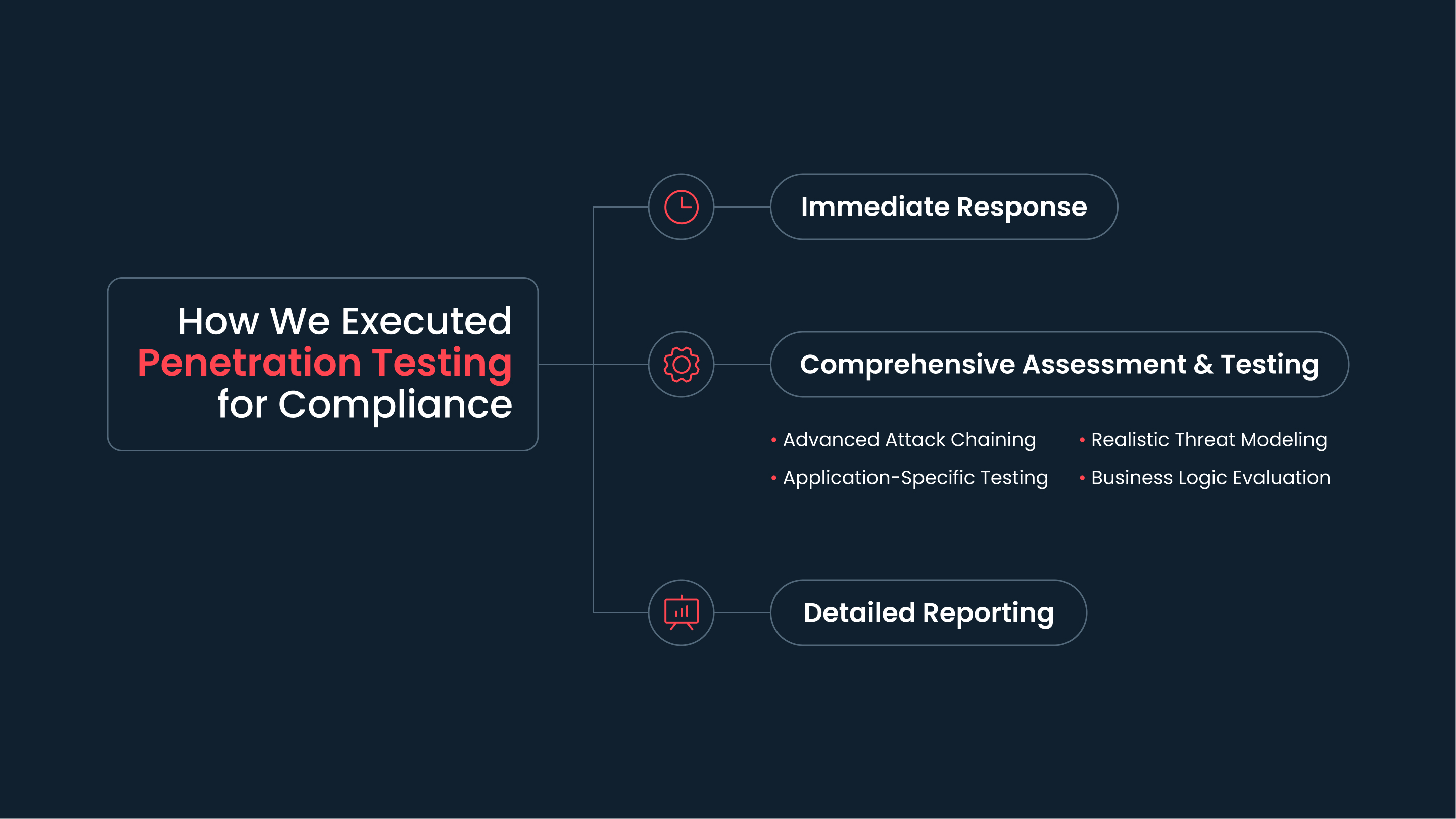In 2024, a specialized payment platform faced an urgent challenge when a major, publicly traded enterprise client rejected their security documentation. To meet compliance requirements, automated vulnerability scanning results were not enough, and their client specifically requested manual penetration testing results alongside their SOC 2 report. With their relationship at stake and a year-end deadline looming, the payment platform turned to Red Sentry for an urgent solution.

In just 10 days, Red Sentry delivered a thorough application penetration test. The team uncovered 15 previously undetected security issues—vulnerabilities that automated scanning had missed entirely.
This rapid response and detailed report satisfied the enterprise client, preserving a valuable business relationship worth hundreds of thousands in revenue.
This study shows the importance of true penetration testing and how it varies from automated vulnerability scanning. That distinction can determine whether companies keep enterprise clients in today’s security-conscious market.
A specialized payment platform had only opted to use Red Sentry's vulnerability scanning service to track its security posture, believing this level of testing was sufficient.
This assumption was suddenly challenged when a major enterprise client's Governance, Risk, and Compliance (GRC) team requested their latest SOC 2 report alongside application penetration testing results. When the payment platform submitted only its vulnerability scanning certification, the client’s security analysts rejected the submission outright.
The enterprise client made their position clear: without comprehensive manual penetration testing, they would terminate the business relationship.
This created an urgent crisis, and the company had to face the following facts:
Recognizing the urgency of the situation, Red Sentry mobilized immediately to conduct an enterprise penetration test focused on the payment platform’s external environment.

Upon receiving the urgent request on December 10th, Red Sentry developed a targeted testing strategy that included both application penetration testing and manual analysis.
Unlike automated scanning, which relies on predefined patterns, our security experts conducted thorough manual testing that included:
Red Sentry delivered the final report on December 20th, meeting their client’s tight end-of-year requirement. It included clear severity ratings, detailed findings, and actionable remediation guidance.
Our manual penetration testing revealed security gaps that automated scanning had missed, proving the importance of human expertise in penetration testing for payment platforms.
We identified 15 security issues that attackers could potentially exploit:
These gaps in the platform's security posture would have remained undetected without manual testing and would have cost the payment platform its enterprise client relationship.
This project underscores why organizations can’t rely solely on automated scanning to meet SOC 2, PCI DSS, and other compliance requirements.
True penetration testing offers the following:
Major enterprise clients and private equity firms understand these differences, which is why they increasingly demand true penetration testing as a prerequisite for business relationships—especially for applications handling sensitive data.
Red Sentry's quick and thorough application penetration testing delivered multiple layers of value to the payment platform.

One of the most immediate and significant benefits was preventing the loss of a major enterprise client. This success saved the payment platform hundreds of thousands of dollars in annual revenue that would have otherwise been lost. Moreover, maintaining this strategic business relationship with a publicly traded company avoided the ripple effect that losing a marquee client reference can cause.
Beyond preserving the client relationship, our penetration testing for compliance uncovered specific security gaps that automated scanning had completely missed. These findings provided a solid foundation for targeted security improvements, helping the payment platform strengthen its overall security posture.
As compliance demands increase, major enterprises—particularly in regulated industries like finance, healthcare, and technology—require stricter security verification. Red Sentry’s manual penetration testing services equipped the payment platform to meet these stringent requirements.
Manual penetration testing is now becoming a standard alongside SOC 2 reports, with PCI DSS explicitly recommending regular penetration testing. Additionally, private equity firms are increasingly mandating rigorous security assessments for portfolio companies.
By upgrading to manual application penetration testing, the payment platform positioned itself to accelerate vendor security assessments in future deals and demonstrate a superior commitment to security compared to competitors.
For financial technology companies, SaaS providers, and organizations working with enterprise clients, application penetration testing is no longer optional; it’s a standard requirement for compliance and a critical safeguard for business relationships.
Red Sentry’s ability to deliver high-quality, urgent manual penetration testing preserved a client that would have otherwise switched vendors.
If you need to meet compliance requirements, pass vendor security assessments, or protect high-value relationships, we can help.
Let’s talk about your application penetration testing needs today.